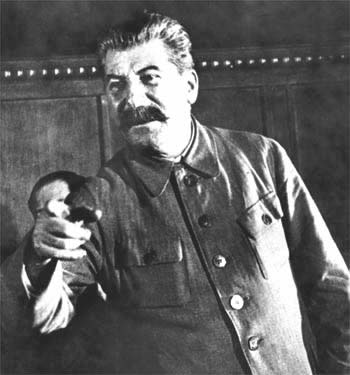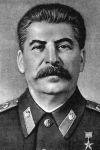The War in the Air
By Capt. Norman Macmillan, M.C., A.F.C.
The War Illustrated, Volume 7, No. 176, Page 668, March 17, 1944.
The air war continues to rise to greater intensity in every theatre of war, except perhaps the Russian, where an almost steady volume of air activity appears to be maintained, particularly by the Germans, who withdraw bomber and fighter formations of the hard-pressed Luftwaffe for action on other fronts as their front in Russia contracts with the continued withdrawal of the German armies. The Germans can effect this air withdrawal without unduly reducing the proportion of their armies' air support per hundred miles of front, not only because of contraction of the defensive line but because of the shortening of lines of communication.
Length of communication lines affects air power just as it affects land and sea power. The aircraft are assembled in factories far removed from the fighting front. From these factories they have to be flown to pools, although the markings on some recently captured German aircraft have indicated that many of their machines have been flown direct from factory to first-line airfield, due to shortage of supplies relative to the demands of the fighting forces.
It must be remembered, however, that shortage of aircraft supplies is sometimes a temporary deficiency brought about by changes of production from one type of aircraft to another, or by the introduction of modifications, such as changes in engine or armament or equipment, all of which must occur from time to time to keep pace with technical developments. And it may be that these particular captured aircraft indicate simply the nature desire of the German generals to get the latest type into action without delay, while maintaining a reserve of earlier types in the pool.
This, indeed, was the method adopted by Fighter Command of the R.A.F. during the Battle of Britain, and the reserve aircraft when brought out during the closing stages of that battle were less well armoured than those that fought in the opening stages. Such occurrences are almost inevitable during defensive fighting, when generals are often forced to play their best cards first to take the attack of their more powerful opponents, with the hope that by doing so they will be able to produce a more favourable balance.
Marshal Stalin proclaimed in a recent Order of the Day that the Red Armies have driven back the enemy 1,000 miles. That means to the Luftwaffe 1,000 miles shorter journey to transport their bombs, fuel, lubricating oil, spares, and technical stores; and it simultaneously knocks the same distance off the journey which the aircraft ferried from factory or pool to front have to fly. All this means a saving in time and personnel, and a saving in aircraft, too, for it is known that numerous German aircraft crashed during ferry flights to the eastern front and thus were lost before they ever got into action.
It is almost certainly this combination of savings that has made it possible for the Luftwaffe to transfer not inconsiderable forces of bombers to Western Europe. Probably the main object behind this transfer was the urgency to get bomber aircraft into position to meet the threat of invasion. The German generals know now from experience gained by them in Sicily and Italy – at Salerno and Anzio – that the critical moment of any amphibious attack is when the assault forces first come in. Then the assault forces' organization to resist counter-attack is at its lowest, and must so continue until sufficient troops can be got ashore to establish positions, get guns into action, seize enough ground for armoured fighting vehicles and fighter aircraft to deploy, and land all the paraphernalia of modern war, disperse it and get it into the fighting lines. Quick as the Germans are at moving aircraft from one front to another it is possible that the Nazi generals feel they dare not take the risk of waiting until the invasion assault begins before transferring bombers from the east to the west.
Taking this as the most probable German point of view, it is possible to read into Stalin's declaration that the enemy is still powerful and not yet beaten; consider also the Roosevelt-Churchill warnings that great battles loom ahead, the significance of the German method of retreat and sacrifice of surrounded troops.
World Has Never Seen a Bigger Defensive Action of its Kind
Germany is fighting a desperate defensive action on land, at sea, and in the air. It is the biggest action of its kind the world has ever seen. And it is being fought with skill and tenacity that display the clever marshalling of forces and the as yet unbroken will to fight of the German soldier. The fact that the present first-line strength of the Luftwaffe is about 1,000 aircraft greater than at the beginning of the war is said to be due to the increased production of fighters compared to bombers. This is reasonable, for the weight of material and the number of man-hours required for fighter production is far below that demanded for bomber production. And as the former ration of the Luftwaffe was around 65 per cent bombers and 25 per cent fighters (the remainder being marine and army co-operation and other types) there was ample opportunity to switch production priorities from one to the other; but the stress is apparent – fighters for defence. At one time we had to do the same.
While the German bombers in the west await zero hour for invasion they are employed in a renewal of the attack on Britain. London is the chief target. The attacks are made by night, for the Luftwaffe still fears the daylight assault on Britain. They have not yet, at any rate, caught up with the quality of American heavy day bombers that can fight back fighters. These interim-invasion attacks on London are a combination of reprisal, exercise, and employment of waiting forces. As the Russian front continues to shorten – the line Memel-Odessa is about 20 per cent shorter than the line Narva-Odessa – it is probable that more bombers will be released for transfer to the west, and that the attacks against Britain will be increased in weight of frequency.
To some extent these attacks on Britain are a result of the Allied policy of bombing fighter factories to clear the skies of fighters for the invasion. And it is one of the penalties that Britain has to pay for being an advanced base. For almost three years we have maintained an unbroken bomber offensive with scant reply from the Luftwaffe, and we have presumably learned more about offensive bombing than about defence against the night bomber. We have multiplied A.A. guns. But multiplied Nazi guns did not stop our bombers from bombing German targets. We need still more scientific night fighter defence. It will come with the need to provide it.
Meanwhile, in the Pacific a U.S. task force has bombed Turk, Japanese naval base in the Carolines. More bombs have fallen on the most northerly Kurile islands, on uncaptured portions of the Marshalls, and on the Marianas. Rabaul has been practically bombed into impotence; the whole New Britain area is dominated by Allied air power. The British night and American day heavy bombers range at will all over west, central and southern Europe. The air offensive never stops.
Previous and next article from The War in the Air
The War in the Air
It might at first sight appear that the entirely naval action in which the Scharnhorst was sunk off the North Cape (see pp. 518-520) was an incident in the war so completely maritime as to refute by i
The War in the Air
Throughout the twelve days' interval, between the break-out from the Anzio beach-head and the capture of Rome, aircraft of the No. 1 Tactical Air Force of the Mediterranean Allied Air Command scoure
Index
Previous article
Britain's Colonies in the War: No. 3 - W. Indies
Under Democratic Constitution offered to Jamaica by the British Government in Feb. 1943, and which it was announced was accepted by the people on May 19, 1943, for the first time in history they will
Next article
This Trawler Helped to Send a U-Boat to its Doom
Fish was the quarry of H.M. trawler Imperialist before the war; now she hunts U-boats. Since early 1940, when she discarded fishing nets for guns and depth charges, the Imperialist has gained for hers





